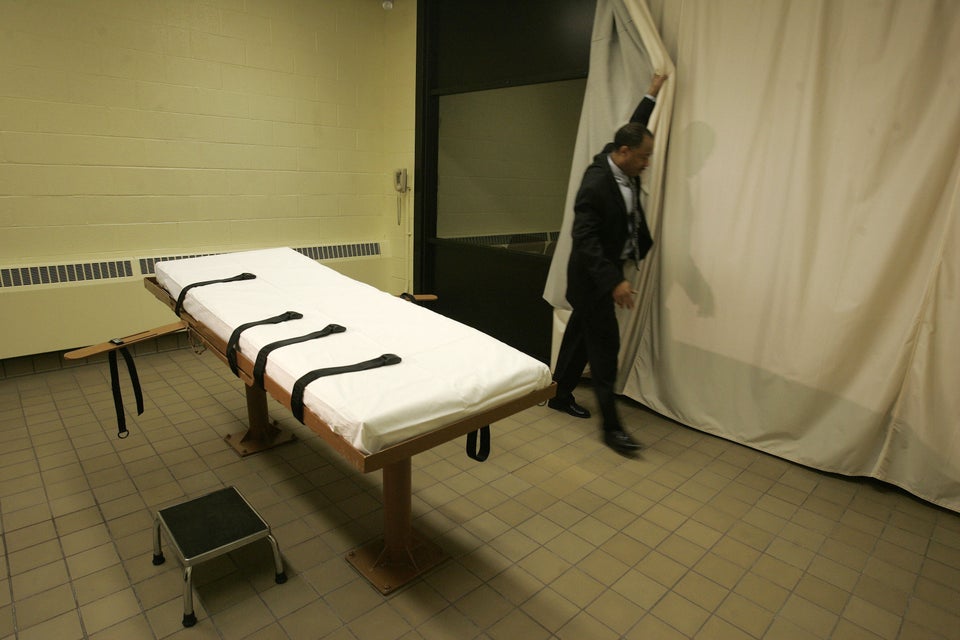The American Nurses Association has taken an official position opposing the death penalty for the first time in its organization’s history.
The organization has objected to nurses participating in the execution of prisoners since 1983, but a revised position statement issued Tuesday now extends the position to capital punishment as a practice.
“The American Nurses Association (ANA) opposes both capital punishment and nurse participation in capital punishment,” the statement reads. “Participation in executions, either directly or indirectly, is viewed as contrary to the fundamental goals and ethical traditions of the nursing profession.”
Read the full revised position statement below.
Other medical professional organizations like the American Medical Association, EMT Association and the American Pharmacists Association have positions against their members playing any role in executions as a matter of ethics. But few, if any, have staked out as unambiguous a stance as the ANA has.
“This is the first time the statement has taken [our position] further and opposed capital punishment itself,” Liz Stokes, the senior policy adviser for the ANA Center for Ethics and Human Rights, said Wednesday.
Stokes said the association widely supported the position change: It received a unanimous vote by ANA’s board of directors and roughly 2,000 comments ― largely supportive ― from other members during the 30-day public comment period.
The ANA explained its path to opposing capital punishment, which wasn’t an obvious one.
“The drafters of the subcommittee were initially supporters of the death penalty until they started doing research,” Stokes said. “It’s kind of a remarkable journey the advisory board has taken during this revision.”
Nurses on the subcommittee were surprised by the large body of evidence against the death penalty, Stokes said; they were particularly moved by the prevalence of racial and geographic disparities in how the death penalty is applied, how it is disproportionately used on people with intellectual disabilities and the fact that there have been more than 150 exonerations of death row inmates.
“If lethal injection were to be challenged under the evolving standards, the opinion of professional associations would come into play.””
- Robert Dunham, executive director of The Death Penalty Information Center
The impact of the ANA’s statement could potentially ripple up to the courts ― though death penalty experts cautioned against quickly expecting too much of a direct effect.
“You’d like to think when large, storied organizations take this position they’d have a big impact, but unfortunately in jurisdictions that have the death penalty, they don’t really have all that much legal impact other than what lawyers call ‘persuasive authority,’” said Craig Trocino, who directs The University of Miami Law’s Innocence Clinic.
But as the standards of decency evolve with regard to the death penalty, positions like the ANA’s are important pieces of the changing landscape. In the past two decades, such evolving standards have yielded the end of executions of juveniles and the end of executions for the intellectually disabled.
“When the U.S. Supreme Court goes through its analysis of the evolving standards of decency, it looks for objective indicators of what the national views are,” said Robert Dunham, executive director of the nonprofit Death Penalty Information Center.
Dunham said the courts have a hierarchy of what information they consider when evaluating evolving standards.
“The first thing courts look at is legislators, and they look at what the executive branches do,” which includes what prosecutors, governors and juries do with regard to decisions on clemency and jury votes, Dunham said.
“Courts also look at public opinion. Depending on the issue, there are different groups whose opinion matters: When it came to determining if juveniles or people with disabilities should be executed, they look at judgments from relevant professional associations,” Dunham said.
“There’s an argument that can be made that if lethal injection were to be challenged under the evolving standards, the opinion of professional associations [like the ANA] would come into play,” he added.
Dunham said the ANA’s opposition to capital punishment was a notable step, particularly given that the organization’s reasoning stems not just from ethical concerns but also human rights concerns.
The U.S. is the only first-world democracy that still practices capital punishment, a distinction noted in the ANA’s analysis. In it, they examine the international nursing community’s acceptance that the death penalty is a violation of human rights.
“That’s a significant development,” Dunham said. “That indicates an American professional association is viewing the death penalty through the prism of international human rights. And that’s a criticism that we haven’t seen as frequently in this country.”
Stokes, of the ANA, said that was a driving force behind the new position.
“Nurses are leaders and continue to be leaders in social justice,” she said. “We’re trying to get the message out there. We want people too look at the evidence and the science.”

